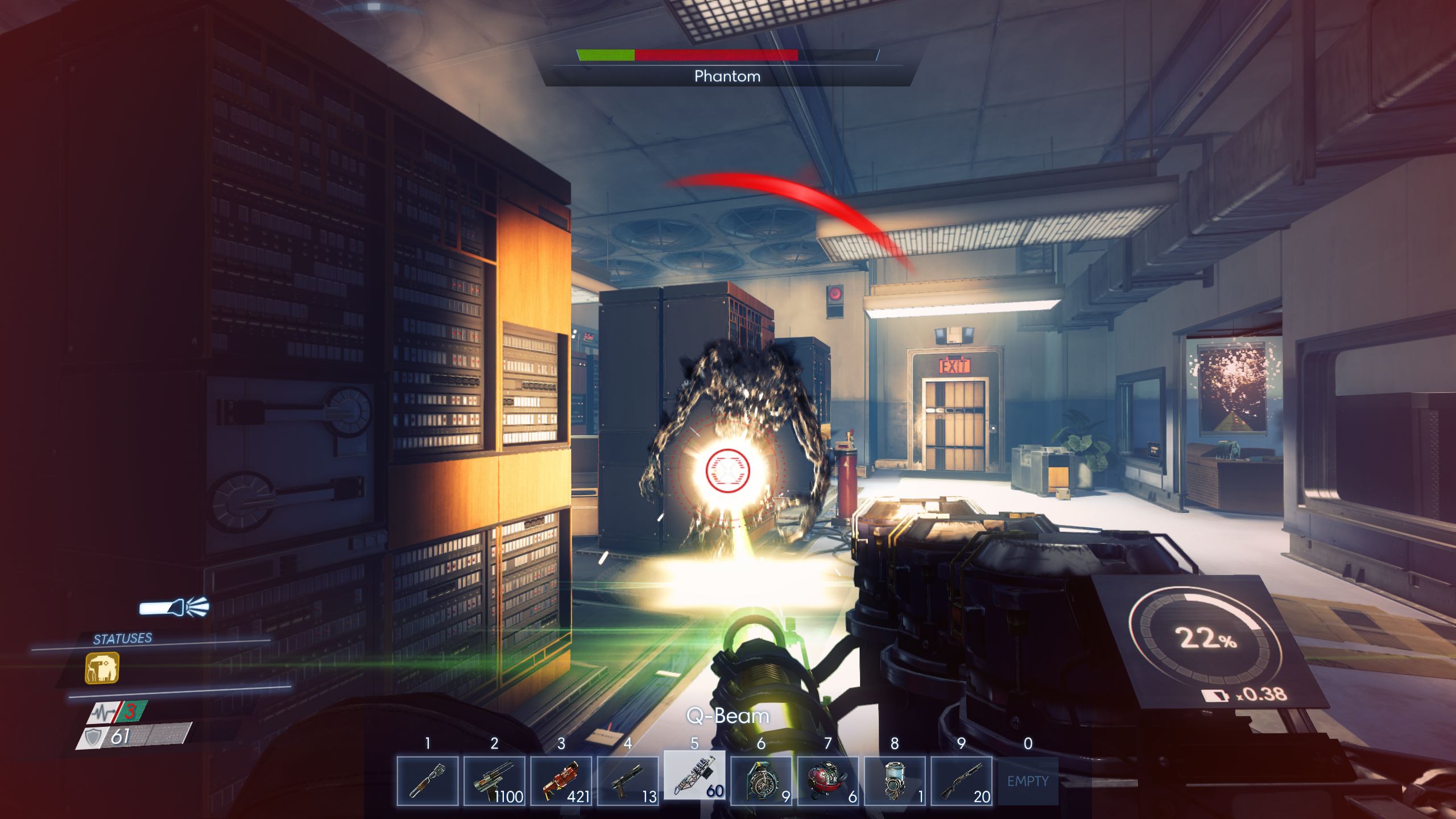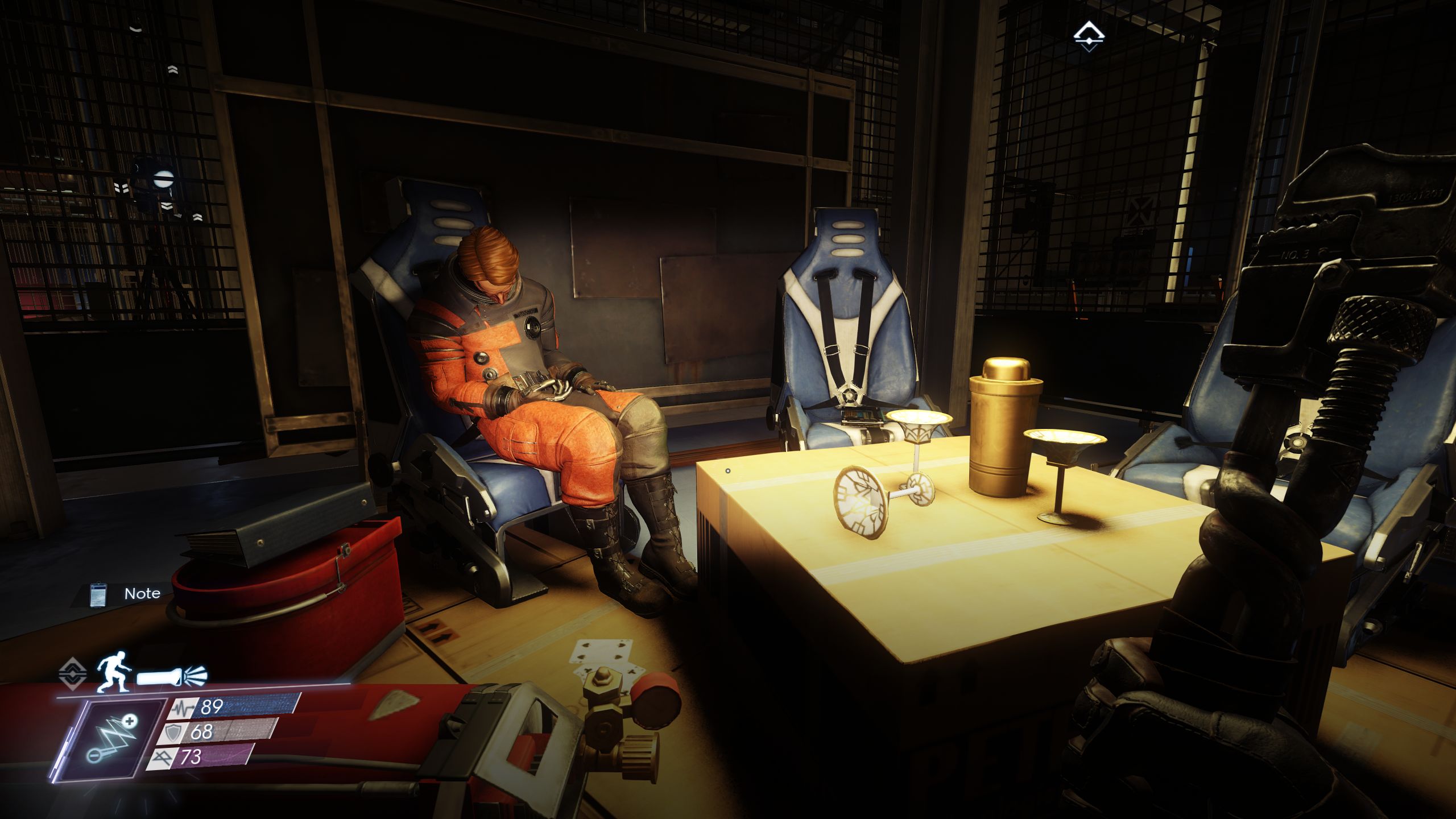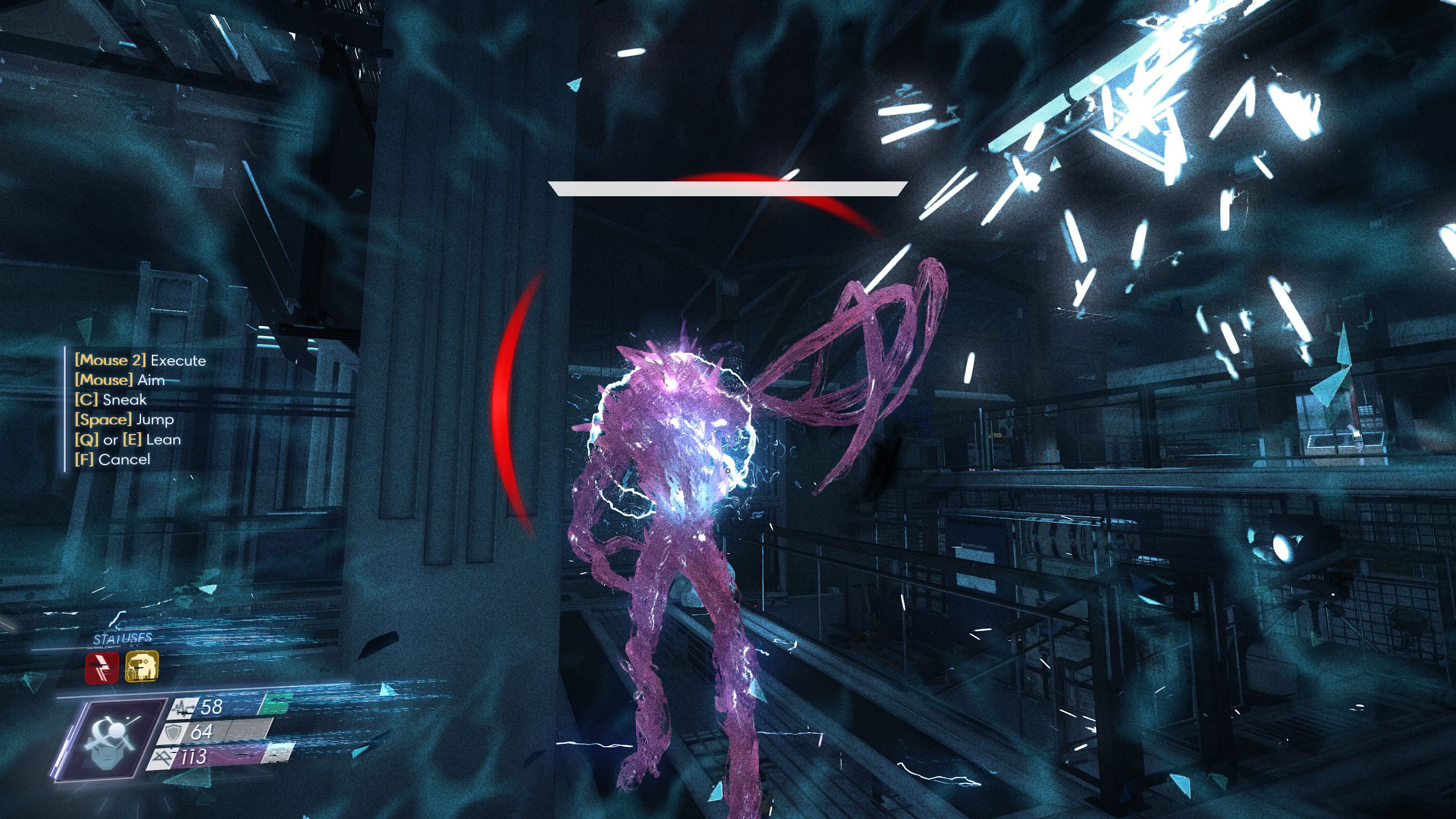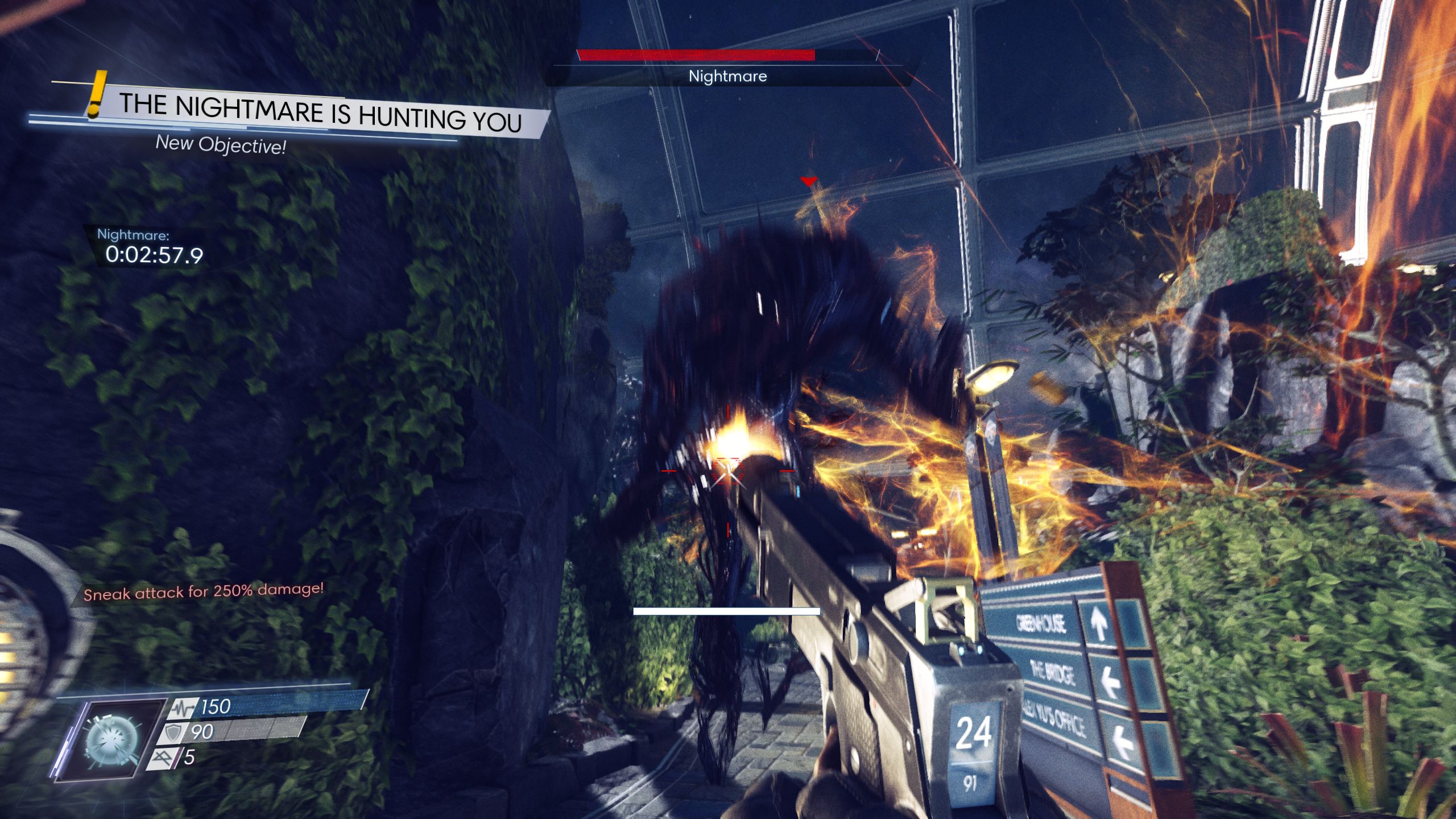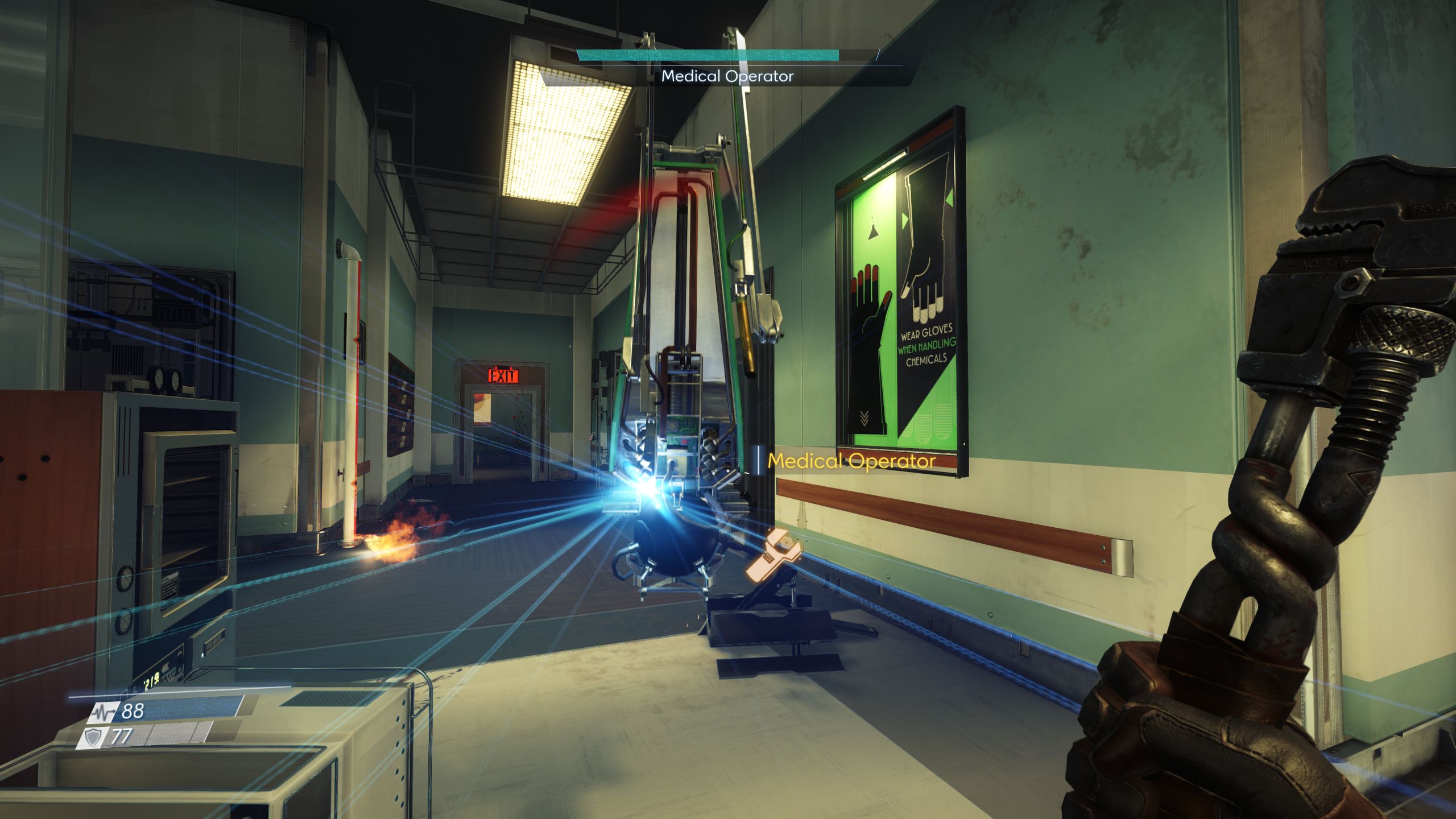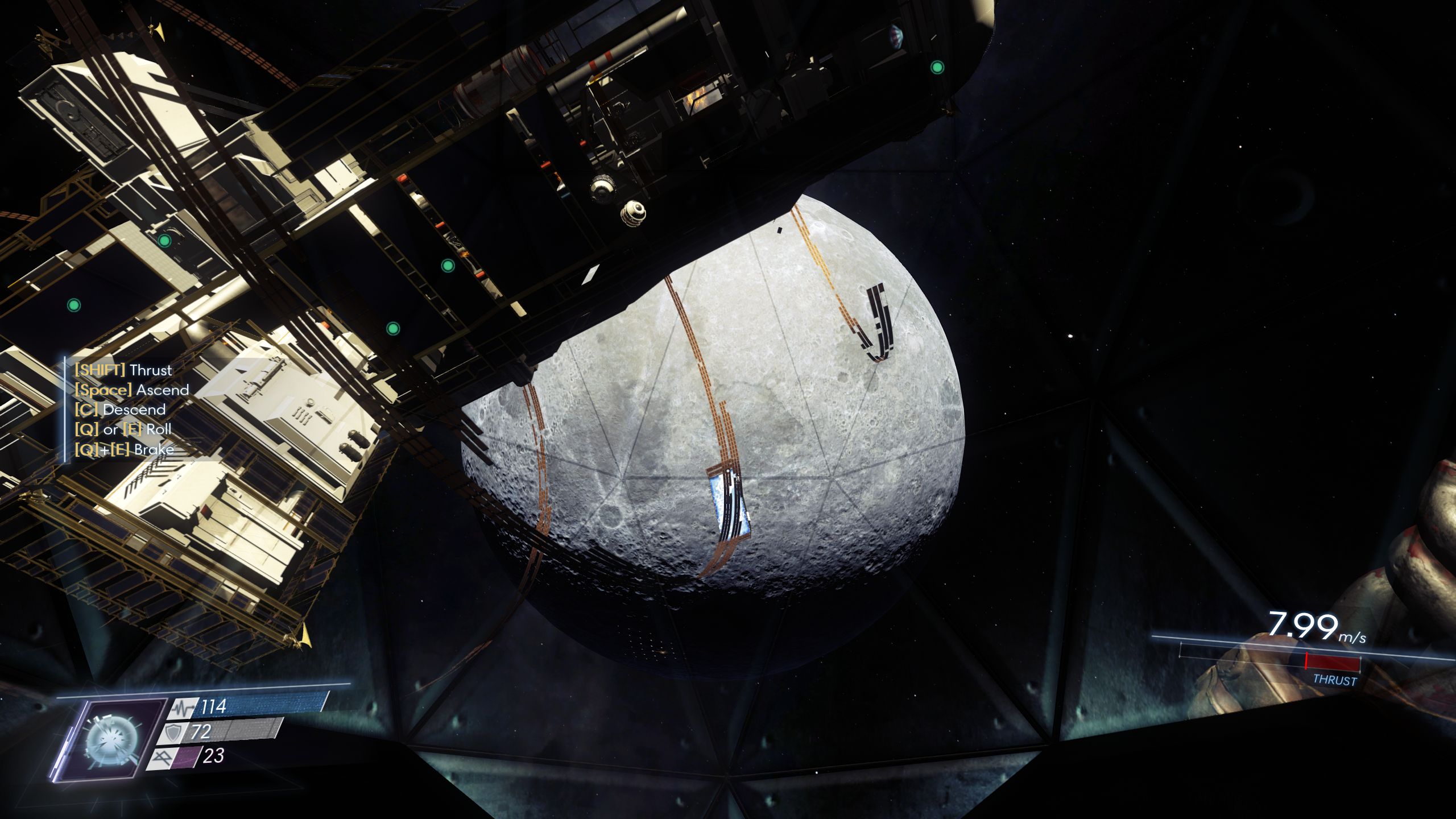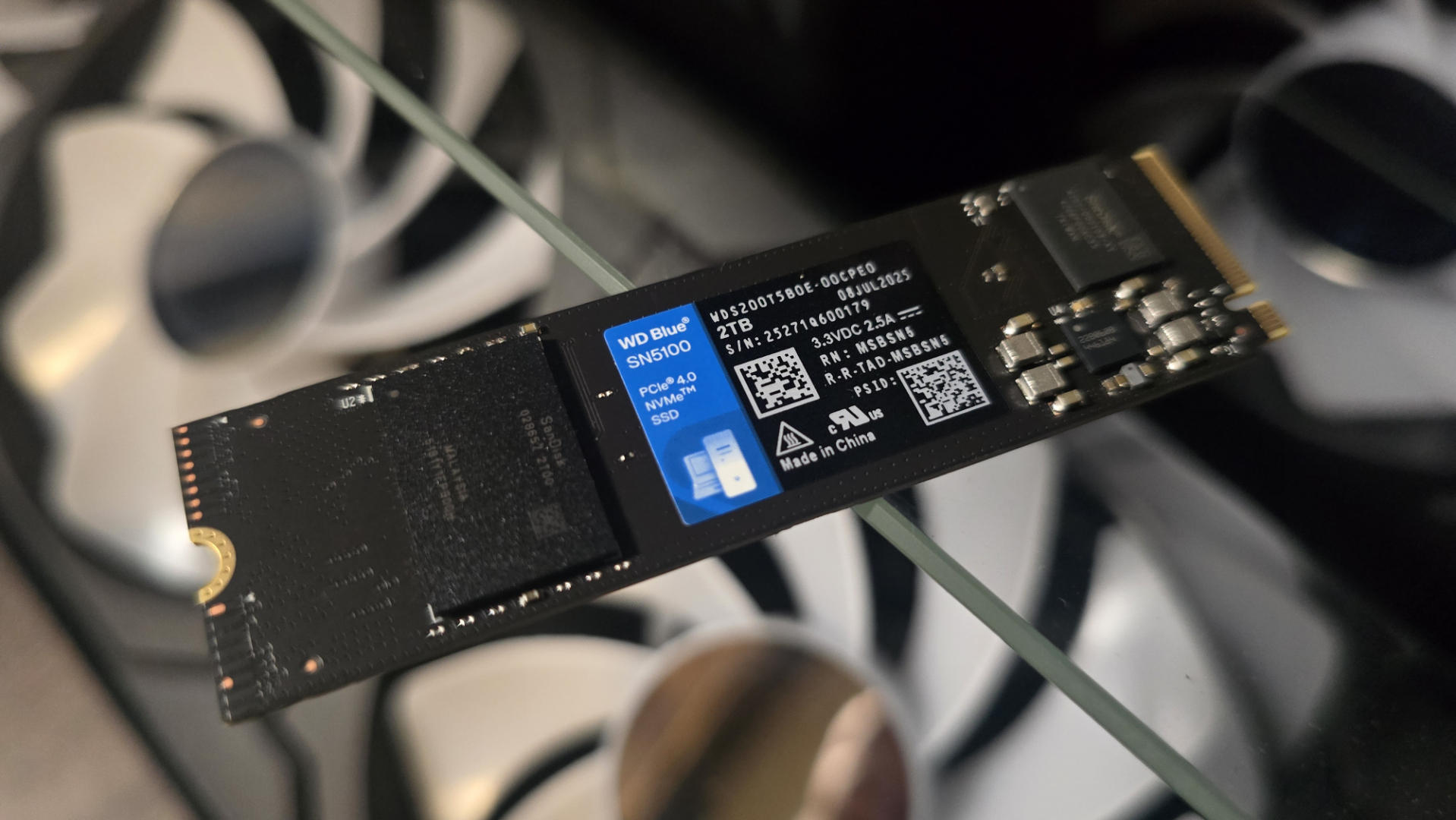Our Verdict
It's let down by lacklustre combat and some annoying enemy design, but Prey is still a compelling, beautiful immersive sim.
PC Gamer's got your back
What is it? A first-person shooter with a variety of play styles and some annoying jump scares.
Reviewed on: R9 Fury X, i5-3570K CPU, 16GB RAM
Price: £40/$60
Developer: Arkane Studios
Publisher: Bethesda Softworks
Multiplayer: No
Link: Official site
Buy it: CDKeys
Read our affiliates policy.
I need to get into this office. That's not entirely true. I want to get into this office, and Prey has taught me that where there's a will, there's a way. The door is unhackable, and its keycard could theoretically be anywhere on the Talos-I space station. It's time to get creative. The windows into the office are breakable, but the gap is too small for me to squeeze through. Also, my standard trick of using the Mimic power to turn into a smaller object won't work. There's no window ledge to perch on, and mugs, understandably, cannot jump very high. There is, however, a computer terminal in view of the window. I've got an idea.
I leave and head for a fabrication station, and spend some of my resources to create a toy crossbow and a pack of foam darts. It's a joke weapon, but, in the right circumstances, a legitimately useful tool. Returning to the window, I shoot a dart at the computer's touch screen—specifically at a large square marked "Utility". Bingo. A menu opens, and inside is an option to unlock the door. Another carefully aimed dart, and I'm able to enter.
Prey is at its best in these moments of creative problem solving. Every closed door presents a multitude of possibilities, whether that's transforming into office detritus, hacking a lock, or simply stumbling upon a keycard—like I did, moments later, on a corpse just meters away from the door. It's a first person immersive sim of the kind Arkane specialises in, but nevertheless offers a very different style and experience to the recent Dishonored 2.
You play as Morgan Yu, and I don't really want to divulge much more than that. Prey's confident opening sequence is as intriguing as it is disorientating. It deserves to be experienced first hand, knowing as little as possible. Here's what I can say: you're on a space station infested with alien creatures. Luckily for you, that space station exists to research and produce Neuromods, designed to make humans faster, stronger, smarter and scientifically magic. So that's going to be a big help.
It's a little bit BioShock, albeit with science instead of Randian sociology. Talos-I, like Rapture, is an idealistic place driven and ultimately undone by its hubris. But where BioShock offered a city made up of linear districts, each seemingly a mini-fiefdom controlled by a deranged king, Talos-I is more open and more immediately chaotic. The disaster is fresh, and the majority of the handful of survivors are concerned primarily with staying alive. Yu has an overarching mission, but executing it first requires finding a way to unlock the various areas of the station.
I really like the design of Talos-I. Just as an individual office in Prey will offer multiple ways to enter, so does the station at large offer multiple ways to traverse it. Moreover, it's one of the most natural feeling spaces I've crawled through in recent memory. In Deus Ex: Mankind Divided, you always know that there's a vent that will take you closer to your mission objective. As such, the environment design, while satisfying, feels artificial. Prey has vents—or maintenance hatches, thus explaining why they're big enough for someone to crawl through—but they're less consistent, and sometimes well hidden. They're a bonus if you find one, not a guaranteed solution, and the space feels more realistic because of it.
I got a great sense of Talos-I as a functioning place, both through the design of the station and the stories found within. Everything makes sense within the ecosystem, such as the crew quarters where people went to unwind and play pen-and-paper RPGs. There's an IT department, server rooms, medical centre, and even an HR office. Away from the darker, more foreboding areas dedicated to weird science, there's a sense that this was a place where people lived and worked. It also looks great, with a contemporary art deco facade that gives way to a more traditionally utilitarian space station design in restricted areas.
Keep up to date with the most important stories and the best deals, as picked by the PC Gamer team.
There's a somewhat linear critical path to follow, which asks you go to specific locations, often (at least initially) via a specific route. But the various sidequests and secrets encourage backtracking, and there are plenty of shortcuts and alternate paths to make that easier and more interesting. There's the central lift, for instance, that links the two main hubs of the Talos-I lobby and the beautifully designed Arboretum. Or there's the GUTS, a zero gravity conduit designed to move power and air, but which also doubles as transportation for aliens and semi-terrified scientists. Alternatively, and perhaps best of all, you can head to an airlock and float out into the space around the station's exterior. Often this is the most relaxing part of the game—akin to BioShock 2's underwater sections.
It's relaxing because there's a low alien density, which is rarely true of the station proper. Prey's aliens—aka, Typhons, aka, shadow jerks—are a varied bunch, with each boasting different powers and attacks. The most common, unfortunately, are Mimics, which take on the form of nearby physics objects only to attack when you approach. It's a cool idea in theory, but in practice it's an enemy built around fairly cheap jump scares—loud, generic horror sound effect and all. After just a few hours they're little more than a frequent irritant, made worse by the fact that they're also annoying to fight.
Combat is at its worst when you're swinging wildly with a wrench, trying to hit a skittering, erratic Mimic. I like the visual design of the Typhons, but I also question the wisdom of having the most frequent foe be a small, spider-like enemy that's difficult to see.
My dissatisfaction with combat was most keenly felt in the opening hours, before the Neuromod upgrades armed me with the relevant passive buffs and active abilities that make battles more interesting. Combat is at its worst when you're swinging wildly with a wrench, trying to hit a skittering, erratic Mimic. I like the visual design of the Typhons, but I also question the wisdom of having the most frequent foe be a small, spider-like enemy that's difficult to see in low light environments.
The aliens become more creepy the more, well, unknowably alien they seem. Phantoms are vaguely humanoid, and so act like the basic grunts—tough, but not terrifying. Above them are the Telepaths, Technopaths, and Weavers, all of them weird floating shapes that thoroughly creep me out. The presence of Mimics makes Prey feel like a bit of a chore. But many of the other enemies add to the tense atmosphere that builds as you explore the station, and escalates as the Typhons take root in the various areas.
The sound design helps sell the eerie menace of these creatures. As I played, I started to pick up on the individual sound cues that hinted at a nearby threat. That also helped alleviate another early problem: the pacing. When I first played, I never felt like I could relax into an area to soak up the stories of its emails and audiologs, because I was always expecting yet another Mimic attack. But once I was able to parse the language of its sound design, I got a much better feel for when I was safe and able to explore without consequence.
You're free to define your combat and play style, based on the available tools and weapons, and on abilities bought with Neuromods. There are six broad ability categories, three human and three alien—the latter unlocked by scanning Typhons after you've retrieved a 'Psychoscope' device. Human powers are your standard immersive sim classics, such as lifting heavy objects, repairing turrets, hacking, stealthing, sprinting, and becoming really good at eating—a trait that results in an increased health boost for consuming food stuffs.
The alien powers are often more interesting, although many are simply a burst damage attack. One of the cheapest to unlock, Kinetic Blast, is an area of effect blast that does a decent chunk of damage and can propel physics objects away. Another, Psychoshock, lets you disable a Typhon's psi power, leaving them temporarily without their most dangerous attacks. And, of course, there's Mimic—the titular power of the game's worst enemy, transformed here into something invaluable for traversal and stealth.
I can't imagine going through the entire game without being able to transform into a tray of ramen, although such a restriction would probably make exploration even more of a satisfying challenge.
Alien powers do come with a trade off, most noticeably that, if you take on too many, the station's turrets will mark you as a threat. Still, I think it's worth it. I can't imagine going through the entire game without being able to transform into a tray of ramen, although such a restriction would probably make exploration even more of a satisfying challenge. Outside of abilities, you also have a range of other tools, such as the excellent GLOO gun, which fires a hardening resin that can be used both for traversal and to temporarily disable enemies. And everything can be further buffed by chipsets, passive buffs installed into your suit and Psychoscope, that let you further focus your build.
My own playstyle took a broad mix of all categories, and was defined partly by things I wanted to do, but also as a reaction against things I didn't. The weakness of the early combat, for instance, pushed me towards improved sneaking, and my dissatisfaction with the basic guns led me to improving the damage buff of sneak attacks, as well as unlocking some heavy hitting alien powers.
I've made my peace with Prey's combat, but that acceptance was hard won. While I gained satisfaction from learning how to take down specific enemies without taking damage, I was rarely thrilled by the moment-to-moment action of a fight. That fits somewhat with Prey's slower pace, and how most Typhon variants are designed to be difficult to take down—with large health bars and powerful or debilitating attacks. Prey isn't a stealth game, per se, and it's entirely possible to play it like a BioShock-style shooter. But the hardiness of the enemies makes the standard guns feel underwhelming without a lot of upgrades and specific abilities, and prioritising combat power comes at the cost of unlocking the more interesting exploration abilities.
The upshot of this is I was a good chunk into the 30 hours Prey took me to complete before I'd unlocked enough combat options to feel like I could satisfyingly resolve a fight. Even then, I was disappointed by the lack of variety present in the enemy AI. Most have just a few basic tricks, and require only a rote series of steps to take down. Had the combat been more dynamic, I'd have warmed to it more easily.
The whole point of this type of game is I should be pursuing the play style that appeals to me. But combat is often unavoidable, especially thanks to the confusing and seemingly arbitrary AI detection. Sometimes I was able to crouch walk directly in front of a Typhon without any response. Other times, one would spot me from the other side of the room, despite me being hidden under a table. I get that stealth isn't the specific focus, but it's a valid option—one that's hampered by the opaqueness of the underlying rules.
While my predilection for exploration options left my combat abilities undercooked for a significant amount of time, I do still appreciate Prey's resource economy, and how interconnected it all feels. The linchpin of this is recycling and fabrication, a way to turn your junk into valuable resources used to 3D print almost any resource in the game. It's taken decades, but I've finally found a crafting system that I like.
You can use fabrication stations to make virtually anything, from weapons and ammo to Neuromods and health kits. First, you need to find a blueprint, which is a welcome excuse to explore. Then, you spend some of your four resource pools to craft what you need. The resource cost depends on the usefulness of the item. So foam darts are incredibly cheap, but Neuromods are not.
Resources are collected by putting items into a recycler, and collecting the material deposits it spits out. There's something inherently satisfying about this process. More than that, though, it's effective at making you consider what you really need. You'll find plenty of junk items, from scrap to Typhon organs, but a more vital source of materials is ammo from guns you don't use. I found the Disrupter—a kind of electrocuting stun gun—to be incredibly situational, and so the majority of the ammo I found for it was recycled into more useful 9mm rounds. It's a cool idea, and light touch enough to be liberating.
It also means you're always rewarded for exploration, as everything you find can be turned into something you need. I loved scouring through the station for loot, both as an excuse to find a way into places I shouldn't be, and because there's also some great stories along the way. Where BioShock and Deus Ex like to play up the dystopian misery, Prey is also careful to include touches of humour in its audiologs and emails. It feels like a more fleshed out and believable place because of it.
I recommend taking time to complete some of the sidequests you'll discover as a result of some of these past communications, as well as those offered by the survivors you'll meet along the way. Sometimes it can feel like the rewards you gain for completing such quests aren't worth the effort, especially given how much you can simply fabricate. But narratively, many have a strong payoff, and certain quests feed into the post-credits ending sequence, which strings together a lot of Prey's concepts into an audacious if not wholly satisfying conclusion.
Unfortunately, some sidequests don't quite land, and for a variety of reasons. One—a pretty lengthy revenge tale—just sort of ends, and in some potentially silly ways. Another—this time based around a difficult moral choice, with fairly heavy emotional stakes for both Yu and another survivor—was entirely undercut by having a separate character call in about a critical objective. Repositioning to hear what the caller was saying, I accidentally triggered yet another character's dialogue. In the end, four people were talking over each other about different missions and I was forced to reload and try again.
Many of Prey's issues are a consequence of its broad range of options. Attempting to cater to a variety of play styles is laudable, but also means that Prey isn't as good a stealth game as Dishonored, nor as good a combat game as BioShock. But while the individual parts have problems, Prey is nonetheless greater than the sum of them. Prey is worth playing, mostly thanks to the strength of Talos-I as a setting, and the excellent environment design. It's fun to explore, full of interesting stories, and also looks and sounds great. Frequently, Prey's strengths build to create a tense and compelling atmosphere. And then it usually undermines it all with yet another goddamn Mimic.
It's let down by lacklustre combat and some annoying enemy design, but Prey is still a compelling, beautiful immersive sim.

Phil has been writing for PC Gamer for nearly a decade, starting out as a freelance writer covering everything from free games to MMOs. He eventually joined full-time as a news writer, before moving to the magazine to review immersive sims, RPGs and Hitman games. Now he leads PC Gamer's UK team, but still sometimes finds the time to write about his ongoing obsessions with Destiny 2, GTA Online and Apex Legends. When he's not levelling up battle passes, he's checking out the latest tactics game or dipping back into Guild Wars 2. He's largely responsible for the whole Tub Geralt thing, but still isn't sorry.
